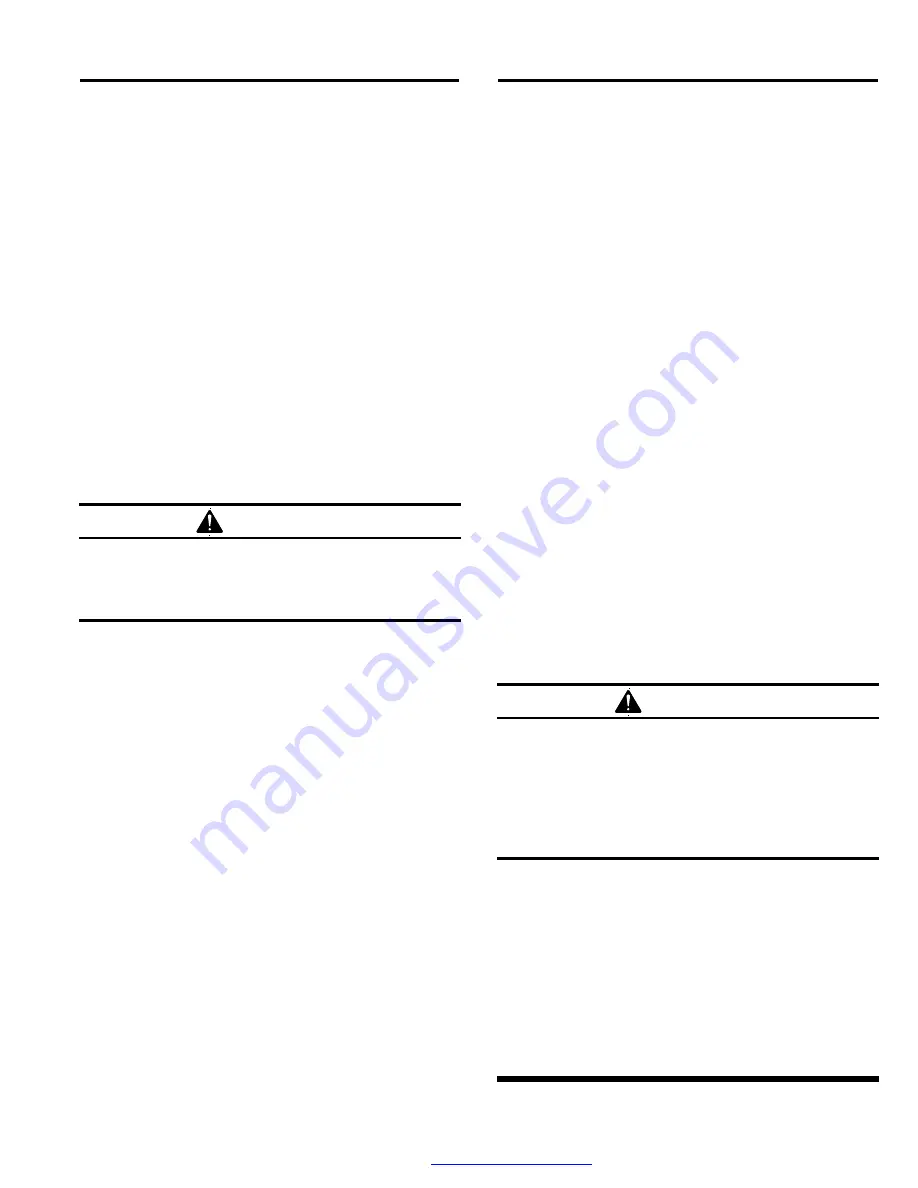
MEDIA RECLAIMER / SEPARATOR
Page 5
© 2005 CLEMCO INDUSTRIES CORP.
•
www.clemcoindustries.com
•
Manual No. 23438
•
Rev. E
2.2
Assembly of Reclaimer on Pressure System
NOTE: The following instructions are for mounting
smaller reclaimers over a storage hopper or blast
machine. Most large reclaimers are furnished as job
orders. For the placement and assembly of job order
reclaimers, refer to the general assembly drawings that
are included with these printed instructions.
2.2.1
Apply adhesive-backed strip gasket to the top of
the flange on the blast machine or storage hopper.
Punch out an opening at each bolt-hole.
2.2.2
Place the optional storage segment on the blast
machine. The access door should be on the bottom, and
rotated to allow access. Bolt into place. Apply adhesive
backed gasket to the top flange per Section 2.2.1.
2.2.3
Using a lift, raise the reclaimer over the blast
machine assembly, and lower it in place. Attach with
fasteners provided.
WARNING
Do not work under the reclaimer while it is
hanging from the lifting device. Severe injury or
death could occur if the reclaimer is released
before it is secured to the blast machine.
2.2.4
Support the Blast Machine: Use ropes or other
means to temporarily support the blast machine and
reclaimer during final assembly.
2.2.5
When the equipment is permanently positioned
bolt the blast machine to the floor. Anchor holes are
located in the blast machine leg pads. Anchor through
the holes to secure the machine to the floor. Larger
reclaimers may need additional support from a point on
the reclaimer to a near by fixed structure. Remove the
temporary supports after the machine is secured.
2.3
Inlet and Outlet Connections
Flex Hose Installation Note:
It is easier to slip the hose
over the adaptor and to create a tighter seal if the first
two or three inches of wire is removed from the inside of
the hose. Use care not to damage the hose. The hose
wire helps dissipate static electricity in the conveying
hose, and helps ground each segment. In order for the
hose wire to dissipate static electricity, the wire must
touch the metal of each segment. Make sure each end
is securely fastened with clamps to prevent media and
dust from escaping.
2.3.1
Connect the appropriately sized flexible
conveying hose or ducting from the recovery source
(cabinet hopper transition, M-Section
®
transition, or wye
pipe) and the reclaimer inlet adaptor, which is located at
the upper side portion of the reclaimer. Clamp the flex
hose securely with worm clamps provided.
2.3.2
Connect the appropriately sized flexible
conveying hose or ducting from the reclaimer outlet, to
the dust collector inlet. Refer to Figure 1.
2.4
Metering Valve Assembly, (suction systems
only)
2.4.1
The type of metering valve feed system is
determined by the number of blast guns. The illustration
in Figure 3 shows several systems. When one blast gun
is used, the metering valve is attached to the pipe nipple
located on the bottom of the reclaimer hopper. If two
guns are used, the first metering valve is installed as
stated above, and the second valve is installed under it
as shown. When more than two blast guns are used, a
media manifold is attached to the bottom of the
reclaimer, using the same amount of valves as blast
guns. Marking each metering valve, hose and blast gun
with a corresponding number makes adjustments and
troubleshooting easier.
2.5
Electrical Wiring
WARNING
Electrical power must be locked out and tagged
out before continuing. Shorting electrical
components could result in serious electrical
shocks, or damage of equipment. All electrical
work, or any work done inside an electrical
panel, must be performed by a qualified
electrician, and comply with applicable codes.
2.5.1
Voltage and motor horsepower depend on the
size of the reclaimer. Unless specified otherwise, 2 hp
and larger motors are 230/460 volt, 3 ph, 60 Hz. Wire
the entire system according to wiring diagrams when
diagrams are provided. Check the amperage on initial
start up. If the motor draws excessive amperage,
gradually close the damper until the amperage is within
the specifications shown on the motor plate. The
damper is located on the inlet of dry filters, and on the
exhauster outlet of reverse-pulse collectors.



































